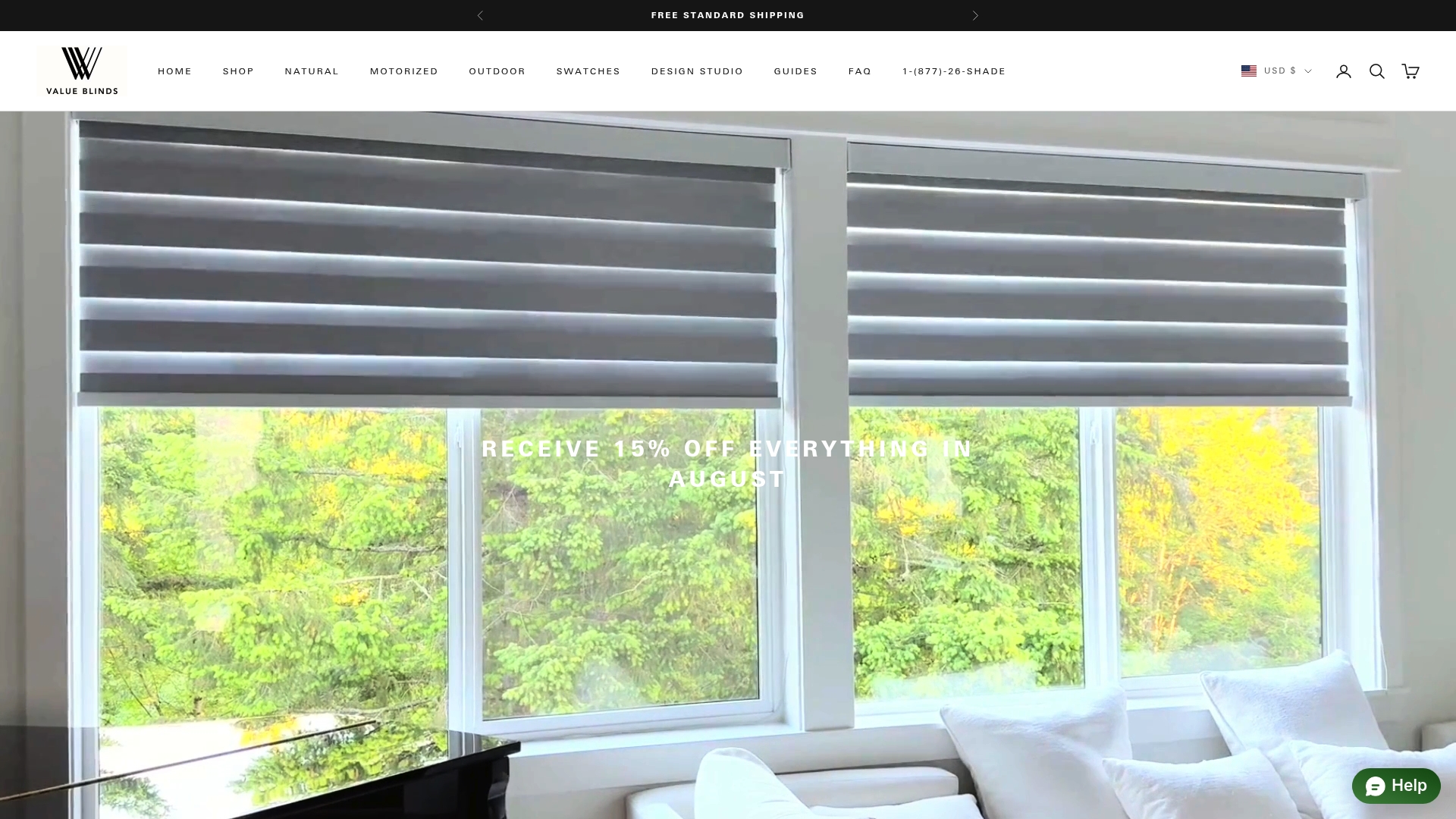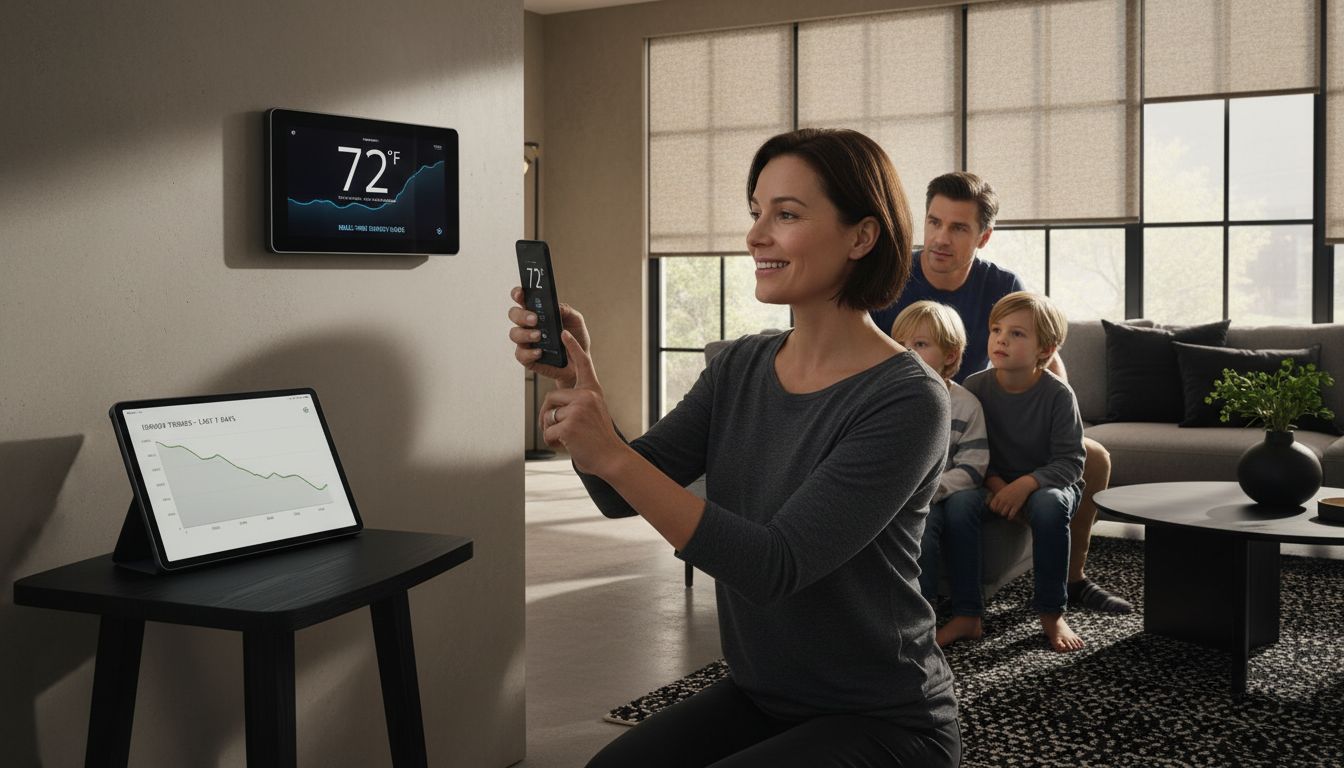
Common Window Sizes: Complete Guide for Homeowners
Did you know that window measurements can vary by as much as 30 inches depending on room type and style? Choosing the right window size shapes how much light, air, and privacy each space gets. Relying on industry standards helps keep your project on track while meeting building codes and design needs. Knowing these common dimensions and the factors that affect them can make every window installation smoother and more predictable.
Table of Contents
- Defining Common Window Sizes And Standards
- Standard Window Dimensions By Type And Room
- How To Measure Windows Accurately
- Custom Size Options And Special Scenarios
- Window Treatment Compatibility And Selection
- Common Pitfalls When Selecting Window Sizes
Key Takeaways
| Point | Details |
|---|---|
| Understanding Standard Sizes | Familiarize with common window dimensions to ensure consistent and functional designs, catering to specific room requirements and architectural styles. |
| Accurate Measurements | Take precise measurements of both internal and external dimensions for a correct fit, with attention to operational characteristics of window types. |
| Consider Custom Solutions | Explore custom window options for unique spaces, ensuring considerations for design, functionality, and budget are thoroughly addressed. |
| Avoid Common Pitfalls | Be mindful of ventilation needs, building codes, and aesthetic compatibility to prevent costly mistakes in window selection and installation. |
Defining Common Window Sizes and Standards
Understanding standard window sizes helps homeowners and designers plan interior spaces more effectively. According to bchousing, window dimensions typically range across different types, with sliding, dual-action, and fixed windows commonly measuring around 1.2 meters wide by 1.5 meters high.
Window sizes are not universal but follow general industry standards that vary by window type. VinylTek highlights that casement windows often range from 2’4" x 3’6" to 3’0" x 6’0", while single- and double-hung windows frequently measure between 2’0" x 3’0" and 2’8" x 5’2". These standard dimensions help manufacturers, installers, and homeowners create consistent, predictable window configurations.
Key factors influencing window sizes include:
- Architectural design requirements
- Building codes and regulations
- Room dimensions and wall space
- Functional needs like ventilation and natural light
For most residential applications, window sizes follow these general categories:

- Small windows: 2’0" x 3’0"
- Medium windows: 3’0" x 4’0"
- Large windows: 4’0" x 6’0"
When shopping for window treatments like custom blinds, always measure your specific window dimensions carefully to ensure a perfect fit.
Standard Window Dimensions by Type and Room
Understanding window dimensions by room and type helps homeowners make informed design and treatment choices. According to APRoDoor, double-hung windows typically range from 24 to 48 inches wide and 36 to 72 inches high, making them versatile for most residential spaces. These standard dimensions provide a reliable framework for planning window installations and selecting appropriate window treatments.
EcoWatch highlights that casement windows, popular in living rooms and kitchens, usually measure 19 to 38 inches wide and 16 to 78 inches tall. Bay windows offer even more variation, ranging from 42 to 90 inches in width and 36 to 78 inches in height depending on panel configuration.
Window dimensions vary significantly by room and architectural design:
Here’s a comparison of standard window dimensions by type and ideal room placement:
| Window Type | Common Dimensions (inches) | Typical Rooms |
|---|---|---|
| Double-Hung | 24-48 W x 36-72 H | Bedrooms Living Rooms |
| Casement | 19-38 W x 16-78 H | Kitchens Living Rooms |
| Sliding | 36-84 W x 24-60 H | Living Rooms Bedrooms |
| Bay Window | 42-90 W x 36-78 H | Living Rooms Dining Rooms |
| Bathroom Window | 24-36 W x 24-48 H | Bathrooms |
| Fixed/Picture | 24-96 W x 12-96 H | Hallways Feature Walls |
- Living Rooms: Typically larger windows (48-90 inches wide)
- Bedrooms: Medium-sized windows (24-48 inches wide)
- Bathrooms: Smaller, more private windows (24-36 inches wide)
- Kitchen: Functional windows with moderate sizes (36-48 inches wide)
When selecting windows, consider these key factors:
- Natural light requirements
- Room size and wall space
- Ventilation needs
- Privacy considerations
To ensure a perfect fit for your custom window treatments, always measure your specific window dimensions carefully and consult with design professionals.
How to Measure Windows Accurately
Accurate window measurement is critical for selecting perfect window treatments and ensuring proper installation. According to Fensterversand, precise measurement involves recording both external and internal widths and heights, as well as capturing diagonal measurements to verify the window’s squareness. This meticulous approach helps prevent costly mistakes and ensures a seamless fit.
Origin Middle East emphasizes the importance of noting rough opening dimensions, which represent the actual space where the window will be installed. Understanding these precise measurements is crucial for homeowners planning window replacements, treatments, or renovations.
Step-by-step window measurement process:
- Gather essential tools:
- Metal measuring tape
- Pencil
- Paper for recording measurements
- Ladder (for hard-to-reach windows)
Key measurement tips:
- Measure width at three points: top, middle, and bottom
- Measure height at three points: left, center, and right
- Always use the smallest measurement to ensure proper fit

- Measure in inches, rounding down to the nearest 1/8 inch
ProTip: Measure twice and double-check your numbers. Even a quarter-inch difference can impact window treatment installation.
For more detailed guidance, check out our guide on measuring for shades, which provides comprehensive instructions for achieving the perfect window treatment fit.
Custom Size Options and Special Scenarios
Custom window solutions offer homeowners unprecedented flexibility in addressing unique architectural challenges. According to VinylTek, custom windows can be tailored in dimensions, shapes, and styles to accommodate specific functional requirements and design preferences that standard sizes cannot meet.
APRoDoor highlights that custom-sized windows become essential when dealing with non-standard room dimensions or distinctive architectural designs. These specialized windows allow for creative solutions in spaces with unconventional layouts, historical renovations, or modern architectural concepts.
Common scenarios requiring custom window sizes include:
- Older homes with non-standard wall openings
- Unique architectural styles (mid-century modern, loft spaces)
- Rooms with unusual geometric shapes
- High-ceiling or irregularly shaped spaces
- Historic building restoration projects
Key considerations for custom window sizing:
- Precise measurement of existing openings
- Consultation with professional designers
- Understanding structural limitations
- Balancing aesthetic and functional requirements
- Budget considerations for non-standard designs
When exploring unique window solutions, transform your living space with custom window treatments that complement your home’s distinctive architectural character.
Window Treatment Compatibility and Selection
Choosing the right window treatments requires careful consideration of window type, size, and functionality. According to Millersville University, specific window dimensions directly impact treatment selection. For instance, a double-hung window measuring 48 inches by 60 inches can accommodate various treatments like Venetian blinds or shades while maintaining full window operability.
Origin Middle East emphasizes the critical importance of understanding a window’s opening mechanism when selecting treatments. Casement windows that swing outward, for example, demand treatments that do not impede their movement or functionality.
Key compatibility factors for window treatments:
- Window type (double-hung, casement, sliding)
- Window dimensions
- Opening mechanism
- Interior design style
- Light and privacy requirements
Window treatment selection matrix:
- Measure window dimensions precisely
- Assess window’s operational characteristics
- Consider room’s aesthetic and functional needs
- Evaluate light control requirements
- Determine privacy preferences
To optimize your selection process, explore our guide on window treatments for bedrooms, which offers comprehensive insights into matching treatments with specific room requirements.
Common Pitfalls When Selecting Window Sizes
Selecting the right window size involves more than simple measurements. EcoWatch warns that a critical mistake homeowners make is neglecting room-specific ventilation requirements. Choosing windows that are too small can significantly impact air quality and comfort, particularly in spaces like bedrooms and living areas where proper airflow is essential.
APRoDoor emphasizes another crucial consideration: local building codes and safety regulations. Particularly for bedrooms, windows must meet minimum dimension requirements to serve as emergency exits. Failing to comply with these egress standards can result in potential legal issues and compromise occupant safety.
Common window selection pitfalls to avoid:
- Ignoring room-specific functional needs
- Overlooking natural light requirements
- Disregarding energy efficiency
- Neglecting architectural style compatibility
- Skipping professional consultation
Key mistakes in window sizing:
- Selecting windows without measuring existing openings
- Choosing aesthetic over functionality
- Underestimating installation complexity
- Forgetting about future maintenance
- Ignoring climate and environmental factors
For nuanced guidance on navigating unique architectural challenges, explore our guide on window treatments for small rooms, which offers targeted insights for challenging spaces.
Find the Perfect Fit for Your Windows with Custom Treatments
Choosing the right window size is only the first step toward a beautiful and functional space. This guide highlights how essential accurate measurements and understanding window types are for selecting treatments that truly fit your home’s needs. Struggling with standard sizes or unique window shapes? You are not alone. Many homeowners face the challenge of balancing natural light, privacy, and ventilation while making sure treatments match their architectural style.
At Value Blinds, we specialize in custom window treatments tailored precisely to your specific measurements and preferences. Whether you need durable options that resist moisture and staining or premium wooden styles that elevate your room’s character, our wide selection has you covered. Start exploring our Water Proof, Oil Proof, Stain Resistant collection for lasting quality or view the latest designs in our New Arrivals to find inspiration for your space.

Don’t wait until ill-fitting blinds or shades ruin your carefully planned window setup. Measure your windows with confidence and find treatments that enhance every room’s light and privacy needs. Visit Value Blinds today to customize your perfect window coverings and enjoy expert support all along the way.
Frequently Asked Questions
What are the standard window sizes for residential homes?
Standard window sizes for residential homes typically range as follows: small windows are generally 2’0" x 3’0", medium windows are about 3’0" x 4’0", and large windows measure around 4’0" x 6’0". These sizes vary by window type and function.
How do I measure windows accurately for treatments?
To measure windows accurately, use a metal measuring tape to record the width at three points (top, middle, bottom) and the height at three points (left, center, right). Always use the smallest measurement and measure in inches, rounding down to the nearest 1/8 inch.
What factors should I consider when selecting window sizes?
When selecting window sizes, consider factors such as the architectural design, building codes, room dimensions, functional needs for ventilation and natural light, as well as privacy concerns.
Why are custom window sizes important?
Custom window sizes are essential when dealing with unique architectural designs or non-standard room dimensions. They provide flexibility to accommodate specific functional requirements and help address design challenges in spaces with unconventional layouts.







